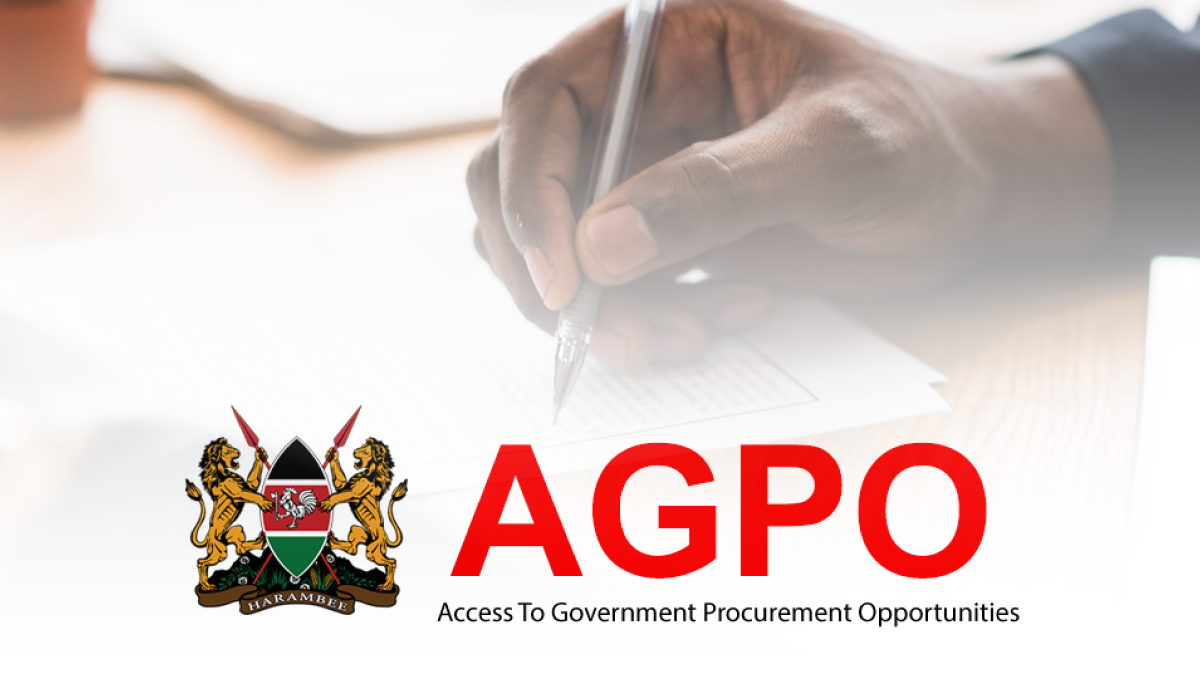Picture this: A young woman in Nakuru just secured her first government contract to supply office stationery. A wheelchair-bound tech entrepreneur in Mombasa is now developing software solutions for county governments. A 28-year-old man from Kibera is providing catering services to a major government institution.
These aren’t just feel-good stories—they’re the real-world impact of Kenya’s Access to Government Procurement Opportunities (AGPO) framework. With Kenya’s real GDP growing by 4.7% in 2024, AGPO represents a strategic tool that goes far beyond compliance to actively reshape our economic landscape.
AGPO is not just about fairness, it’s about building an inclusive, competitive, and sustainable economy.
Policy Implementation Framework, 2024


The Constitutional Foundation: Why AGPO Matters Now More Than Ever
When Kenya’s lawmakers embedded AGPO into our legal framework through Section 157 of the Public Procurement and Asset Disposal Act, 2015 (Revised 2022), they weren’t creating just another policy—they were operationalizing constitutional equality. The framework mandates that 30% of government procurement opportunities be set aside specifically for youth, women, and persons with disabilities, transforming Article 27’s equality provisions from aspirational text into measurable economic impact.
Here’s what makes this particularly relevant today: women entrepreneurs, though winning a high number of contracts, are confined to low-value tenders. This recent finding highlights both the progress made and the work still ahead. The legal framework exists, the demand is there, but the quality of opportunities needs enhancement.
The connection to our national development goals is undeniable. AGPO directly supports Kenya Vision 2030’s transformation agenda and aligns with multiple Sustainable Development Goals, particularly SDG 8 (Decent Work and Economic Growth) and SDG 10 (Reduced Inequalities). As we navigate economic recovery and growth, inclusive procurement becomes not just morally imperative but economically strategic.
The Implementation Gap: Where Policy Meets Reality
The most significant barrier to AGPO success isn’t the legal framework—it’s the gap between policy design and operational reality.
Government Procurement Analysis, 2024
Despite having one of Africa’s most comprehensive legal frameworks, the uncomfortable truth is that we’re not hitting our targets consistently. The 30% threshold remains more aspiration than reality across many government entities, creating a significant implementation gap that undermines the program’s potential impact.
I’ve observed this challenge firsthand in my work with various government entities. Procurement officers understand the legal requirements but often lack the practical tools for effective implementation. SMEs possess innovative solutions but struggle to navigate complex government systems. Accounting officers want to comply but need clearer guidance on measurement and reporting mechanisms.
Recent evidence suggests that structural issues compound these challenges. The tendency to confine AGPO beneficiaries to lower-value contracts limits both individual business growth and the program’s overall economic impact. When a youth-owned tech company is restricted to supplying basic office materials instead of developing innovative digital solutions, we waste both talent and opportunity.

The current quarterly reporting system, while well-intentioned, often arrives too late to influence procurement decisions. By the time non-compliance is identified, procurement cycles are complete, and opportunities are lost. This reactive approach needs transformation into a proactive, integrated system.
Strategic Solutions: Building the Future of Inclusive Procurement
The path forward requires four interconnected interventions that address systemic challenges while strengthening individual capacity:
Mandatory Quarterly Reporting with Real-Time Integration Moving from annual to quarterly reporting represents more than frequency change—it’s about creating accountability loops that matter. Real-time dashboards will enable procurement entities to track AGPO performance throughout the year, making mid-course corrections possible. This shift transforms reporting from post-mortem analysis to active management tool.
Integration into Procurement Planning DNA The most transformative change involves embedding AGPO considerations into the procurement planning process from inception. Rather than treating the 30% target as an afterthought, procurement plans will incorporate AGPO allocations during budget development. This ensures that suitable opportunities are identified and structured for AGPO beneficiaries before tender publication.
Enhanced Capacity Building for Competitive Excellence Addressing the low-value contract limitation requires comprehensive capacity building that goes beyond basic tender writing. The enhanced program will cover proposal development, contract management, financial planning, and technical capacity building. This holistic approach ensures AGPO beneficiaries can compete effectively for higher-value, more complex contracts.
Accountability Framework with Progressive Sanctions The introduction of graduated sanctions for non-compliance creates incentive structures that make compliance the path of least resistance. Rather than punitive measures, this framework emphasizes support, guidance, and ultimately, accountability for results.
These interventions work synergistically. Enhanced capacity building increases the quality of AGPO bids, making procurement officers more confident in awarding contracts. Integrated planning ensures suitable opportunities exist. Real-time reporting enables course corrections. Accountability frameworks ensure consistent implementation.
The economic implications extend beyond individual beneficiaries. When government procurement actively develops SME capacity, it creates businesses capable of regional and international competition. The skills developed through government contracts become competitive advantages in private sector markets.
AGPO’s evolution from compliance requirement to economic development tool reflects Kenya’s broader transformation journey. As we build back better from recent economic challenges, inclusive procurement ensures that growth benefits reach historically marginalized communities while strengthening our overall economic foundation.




